Understanding the 4Cs of Diamonds
When choosing the perfect diamond, understanding the 4Cs is crucial. These four characteristics – carat, cut, clarity, and color – determine a diamond’s quality and value. In this section, we’ll introduce you to the 4Cs and provide some interesting facts about diamonds.
Carat: Weight Matters
Carat refers to the weight of a diamond. One carat equals 200mg and is divided into 100 points. The carat weight significantly affects a diamond’s price, with larger diamonds generally costing more.
Cut: Shape and Quality
The cut of a diamond involves its shape and the quality of its cutting and polishing. Superior cuts result in higher-quality diamonds, with the Round Brilliant Cut being the most popular. The cut also influences a gem’s symmetry, proportions, and light-reflecting ability.
Clarity: Flawless to Included
Clarity measures a diamond’s internal and external flaws. Diamonds are graded on a scale from Flawless (no visible flaws at 10x magnification) to Included (numerous flaws). Expert analysis is required to determine a diamond’s clarity grade, quality, and value.
Color: From Colorless to Light Yellow
Color refers to a diamond’s natural hue, graded on a scale from D (colorless) to Z (light yellow or brown). Colorless diamonds are rare and highly valuable, while other diamonds in the normal color range have varying prices. success rather than relying on gifted adornments.
Notable lab-grown diamonds include “Shiphra,” a record-breaking 50.25-carat diamond created by Ethereal Green, and a 35-carat diamond produced by Maitri Lab-Grown Diamonds. Even celebrities like Jeff Bezos’ fiancée, Lauren Sanchez, have been seen wearing lab-grown diamonds.
In summary, understanding the 4Cs of diamonds is essential when selecting the perfect gem. By considering carat, cut, clarity, and color, you can make an informed decision and choose a diamond that suits your preferences and budget.
Selecting the Ideal Shape and Cut
Selecting the perfect diamond shape and cut is essential for showcasing your personal style and enhancing the beauty of the stone. There are various shapes and cuts to choose from, each with its unique characteristics and appeal.
One popular option is the cushion-cut diamond, known for its timeless appeal and soft, rounded edges. This cut features a rectangular or square shape with rounded corners, providing a classic vintage look. Cushion-cut diamonds also offer over 20% savings compared to round-cut diamonds, making them an attractive choice for budget-conscious buyers. To explore cushion-cut diamonds, consider reputable jewelers like Rare Carat.
Another popular choice is the round-cut diamond, characterized by its circular shape and 58 facets. This cut maximizes sparkle and is a classic option for engagement rings.
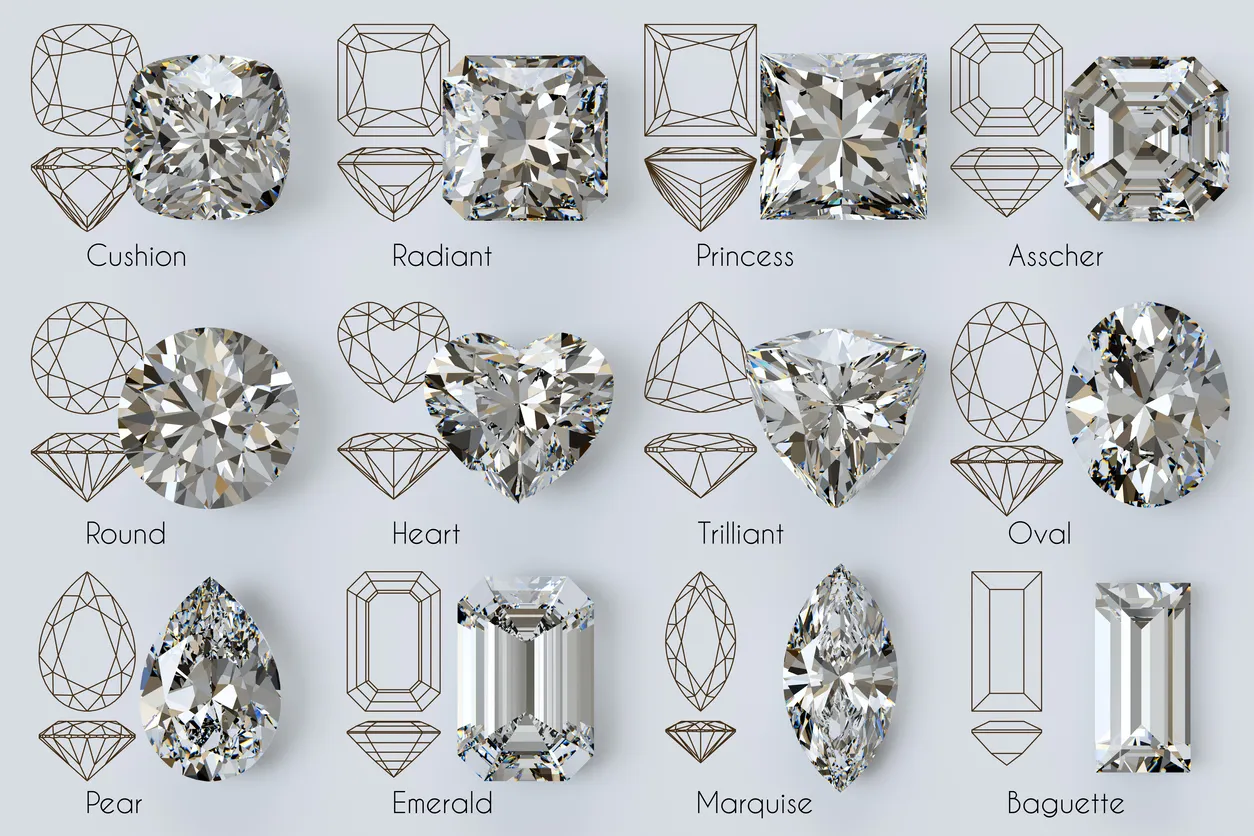
Modern lab-grown round cut diamonds are gaining popularity as ethical alternatives to natural diamonds, offering beauty and affordability.
For those looking for something unique, consider oval and “moval” cuts, a cross between oval and marquise cuts. These cuts are gaining traction, along with east-west settings that increase popularity for various stone shapes.
Vintage-style engagement rings using antique cuts, such as rose cuts, old Europeans, and old mine cuts, are also trending. These cuts offer a unique and untraditional look, featuring colored side stones and mixed metal designs.
Princess cut engagement rings, or “square modified brilliant cut,” are popular due to their clean, glamorous, and perfectly square shape. With 50 to 58 facets, this cut maximizes sparkle and is perfect for those who prefer a more modern look.
When choosing the ideal shape and cut, consider factors such as personal preference, budget, and current trends. Remember to balance the 4Cs: cut, color, clarity, and carat weight, to ensure you select the perfect diamond for your needs. With the right shape and cut, your diamond will be a stunning symbol of love and commitment for years to come.
Evaluating Diamond Clarity
Evaluating diamond clarity is a crucial aspect of selecting the perfect gemstone for your jewelry. Clarity refers to the presence of inclusions and blemishes in a diamond, which can affect its overall appearance and value. When choosing a diamond, it’s essential to understand the importance of clarity and how to select the right grade for your needs.
Importance of Clarity
A diamond’s clarity can greatly impact its beauty and brilliance. Inclusions and blemishes can disrupt the path of light through the stone, diminishing its sparkle. Additionally, a diamond with fewer inclusions is generally more valuable, as it is rarer and more desirable.
Clarity Grading
Diamond clarity is graded on a scale from Flawless (FL) to Included (I). Flawless diamonds have no inclusions or blemishes visible under 10x magnification, while Included diamonds have noticeable imperfections. The Gemological Institute of America (GIA) is a reputable organization that provides clarity grading for diamonds. You can refer to their technology have made it easier to evaluate a diamond’s clarity. For example, AI-based machine learning systems are being developed to determine diamond clarity with greater accuracy. This technology can help consumers make more informed decisions when purchasing diamonds.
Choosing the Right Clarity Grade
When selecting a diamond, consider your budget and personal preferences. If you prioritize a diamond’s appearance, opt for a higher clarity grade. However, if you’re more concerned with size or budget, a lower clarity grade may be suitable. Keep in mind that some inclusions are not visible to the naked eye, so a lower clarity grade may still result in a beautiful diamond.
Consult an Expert and Trust Your Instincts
Finally, it’s essential to consult an expert and trust your instincts when evaluating diamond clarity. A professional jeweler can help guide you in selecting the right clarity grade for your needs. Additionally, remember that each diamond is unique, and ultimately, the perfect diamond is the one that speaks to you and your personal style.
Choosing the Right Diamond Color
When it comes to selecting the perfect diamond, color plays a crucial role in determining its beauty and value. Diamonds come in various hues, ranging from white (clear) to rare colors like blue, green, and pink. Understanding the factors that influence diamond color can help you make an informed decision when choosing the right gemstone for your jewelry piece.
Consider the Jewelry Type
The type of jewelry you’re planning to create can influence your choice of diamond color. For instance, clear or white diamonds are ideal for pendants or solitaire rings, as they exude a timeless elegance. On the other hand, colored diamonds can add a unique touch to statement pieces and band styles. Ultimately, the choice depends on your personal preferences and the desired look of your jewelry.
Examine the Diamond in Different Lighting
Diamonds can appear different under various light sources, so it’s essential to view them in natural daylight, fluorescent, and incandescent light. This will ensure that you’re satisfied with the color and appearance of the diamond in all lighting conditions.
Consult a Professional
Seeking advice from a professional gemologist or jeweler can be invaluable in choosing the perfect diamond color. They can provide guidance on the ideal color for your specific piece and offer insights into the 4 Cs (carat, cut, color, and clarity) of diamond quality.

Interesting Facts About Diamond Color
Did you know that the color of a diamond is influenced by its journey from deep within the Earth to the surface? White diamonds, for example, are closest to a pure carbon crystal and display a unique silvery sheen. Brown diamonds, on the other hand, display color due to “plastic deformation” during their formation. Yellow diamonds form when nitrogen is absorbed into the diamond’s crystal structure.
In addition to natural diamonds, lab-grown diamonds are becoming increasingly popular for their ethical and sustainable production methods. These diamonds have fewer impurities, higher clarity, and are more affordable than their natural counterparts. You can explore lab-grown diamond options at reputable companies like Brilliant Earth.
In summary, selecting the perfect diamond color involves considering the jewelry type, examining the diamond in different lighting, and consulting a professional. By keeping these factors in mind, you can confidently choose a diamond that reflects your personal style and enhances the beauty of your jewelry piece.
Determining the Optimal Carat Weight
Determining the optimal carat weight for your diamond involves striking the right balance between your budget and personal preferences. Carat weight is a crucial factor that influences the price and appearance of a diamond. Here are some tips to help you find the perfect carat weight for your needs.
Set a Budget
Establishing a budget beforehand can help narrow down your search for the perfect diamond. This allows you to focus on finding a gem that offers the best value for your money. Remember, it’s essential to strike a balance between the diamond’s characteristics, such as carat weight, cut, clarity, and color.
Consider Personal Preference
Your personal preference plays a significant role in determining the ideal carat weight. Some people may prefer larger diamonds, while others might opt for smaller, more subtle gems. It’s essential to choose a diamond that suits your style and complements your overall look.
Work with a Reputable Jeweler
Collaborating with a trustworthy jeweler can help you find the right carat weight based on your budget and preferences.
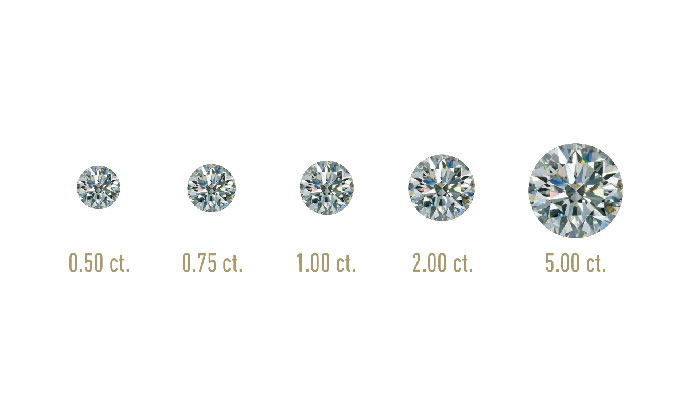
They can guide you through the selection process and provide valuable insights into the diamond’s characteristics. Additionally, a reputable jeweler will ensure that the diamond comes with certification from institutes like the International Gemological Institute (IGI), giving you confidence in your purchase.
Pay Attention to Certification Details
Certification details can provide essential information about the diamond’s carat weight and other characteristics. Lab-grown diamonds, for instance, often have fewer impurities and higher clarity grades compared to natural ones. Recently, an Indian company, Ethereal Green, produced a record-breaking 50.25-carat lab-grown diamond using the chemical vapor deposition (CVD) process, showcasing the potential of lab-grown diamonds as an affordable and environmentally friendly option.
In conclusion, finding the perfect carat weight for your diamond involves considering your budget, personal preference, and working with a reputable jeweler. By paying close attention to certification details, you can ensure that you’re making an informed decision and selecting a diamond that suits your needs and preferences.
Certification and Grading
Certification and grading play a crucial role in ensuring the quality and authenticity of a diamond. These processes provide a consistent and credible evaluation of a gemstone’s characteristics, such as its clarity, color, and overall quality. As a result, consumers can make informed decisions when purchasing diamonds.
Technological Advancements in Diamond Grading
Over the years, diamond grading has evolved with the help of technological advancements, including Artificial Intelligence (AI) and machine learning. These innovations enable machines to grade a diamond’s color and clarity without human intervention, ensuring a more accurate and unbiased assessment. Organizations like the Gemological Institute of America and Sarine Technologies Ltd. utilize technology to determine a diamond’s clarity, color, and other traits.
Innovations in the industry also allow for measuring a diamond’s light performance, differentiating between natural and lab-grown diamonds, and tracking stones throughout the supply chain. These advancements contribute to a more transparent and reliable gemstone market.
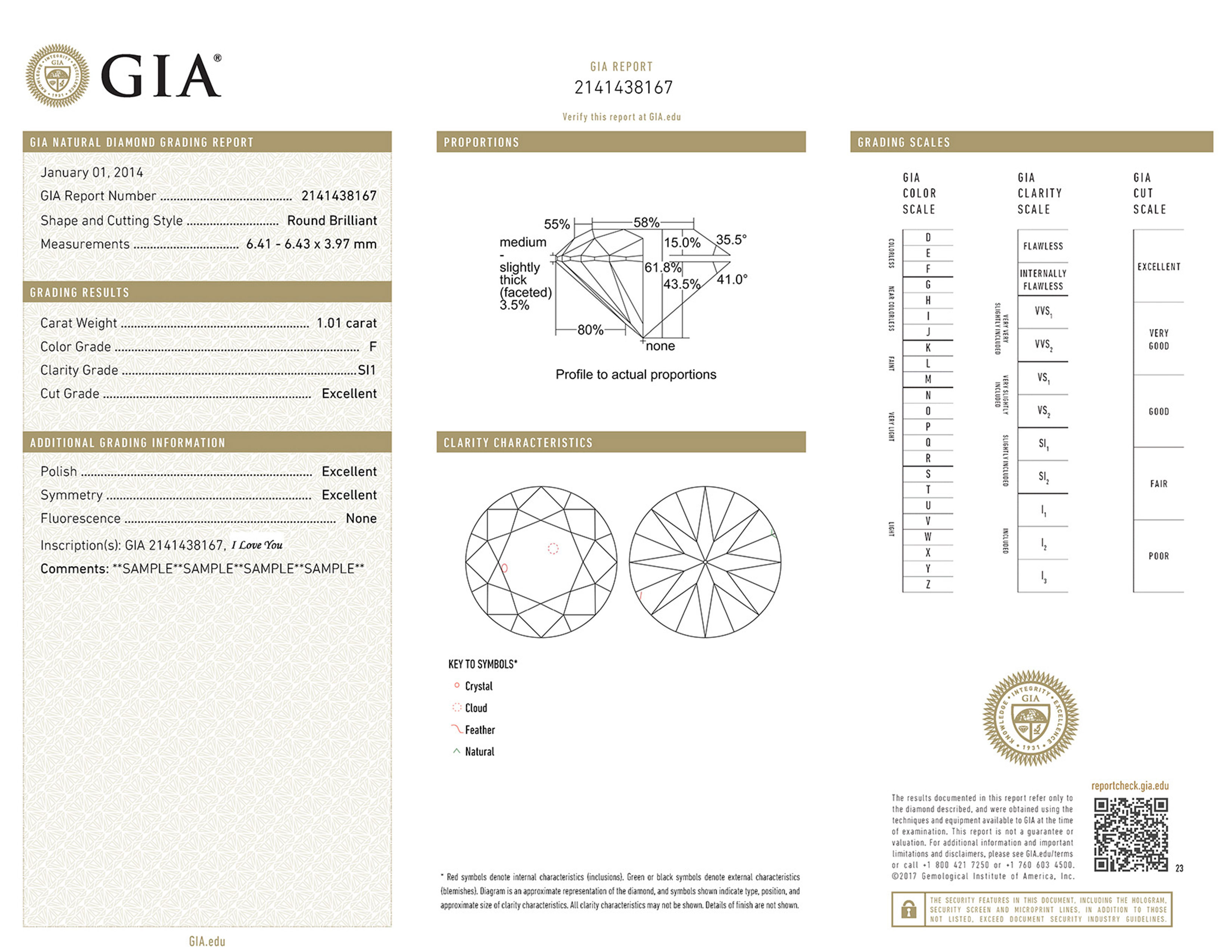
International Gemological Institute: A Leader in Certification
The International Gemological Institute (IGI) is a prominent gemological laboratory that holds ISO accreditation for both natural and lab-grown diamonds. With 29 laboratories worldwide, 18 of which are in India, IGI plays a significant role in the global gemology landscape.
The recent acquisition of IGI by Blackstone, the world’s largest alternative asset manager, for $535 million highlights the importance of certification in the gemstone industry and strengthens India’s prominence in global gemology.
Why Certification Matters
When selecting a diamond, it’s essential to choose one with a reputable certification. This ensures that you’re purchasing a high-quality, authentic gemstone that has been accurately graded. A certified diamond also provides peace of mind and confidence in your investment.
In summary, certification and grading are vital components of diamond quality assurance. Technological advancements have improved the accuracy and reliability of these processes, while organizations like IGI continue to lead the way in global gemology. When purchasing a diamond, always prioritize certification to ensure you’re making a wise and informed decision.
Selecting the Perfect Setting
Selecting the perfect setting for your diamond is crucial in showcasing its beauty and enhancing its brilliance. A well-chosen setting can also make your diamond appear larger and more impressive. In this section, we will explore popular setting options and factors to consider when making your choice.
Popular Diamond Settings
The classic prong setting is a popular choice for its ability to maximize light exposure, allowing the diamond to sparkle to its full potential. A pear brilliant cut diamond, like the one seen in Rihanna’s toe-ring, can truly shine in a solitaire setting.
For added security, consider a bezel setting, which encircles the diamond with a metal band. This setting is ideal for those with an active lifestyle or who work with their hands frequently.
A halo setting features a center diamond surrounded by smaller stones, accentuating the size and brilliance of the main gem. This romantic setting is often used in engagement rings, such as the marquise cut diamond ring proposed to actress Gemological Institute of America (GIA), certify lab-grown diamonds, ensuring their quality.
Environmentally conscious consumers are increasingly drawn to lab-grown diamonds for their sustainability and ethical production. By exploring different setting options and considering factors such as size, shape, and personal preferences, you can find the perfect setting to showcase your diamond’s beauty.
Budgeting for Your Diamond
Creating a budget for your dream diamond is essential to ensure you get the best value without breaking the bank. Here are some tips to help you budget for the perfect diamond.
Set a Realistic Budget
First, determine a budget based on your financial situation. Prioritize saving for a diamond within your means and avoid going into debt. Remember, a beautiful diamond can be found at any price point.
Research the Diamond Market
Educate yourself about diamonds and their prices. This will help you understand the value of different diamonds and ensure you get the best deal. Websites like Blue Nile and James Allen offer comprehensive information on diamond pricing.
Choose Shape and Carat Size
Determine the shape and size of the diamond that best fits your preferences and budget. Keep in mind that larger carat sizes typically come with a higher price tag.
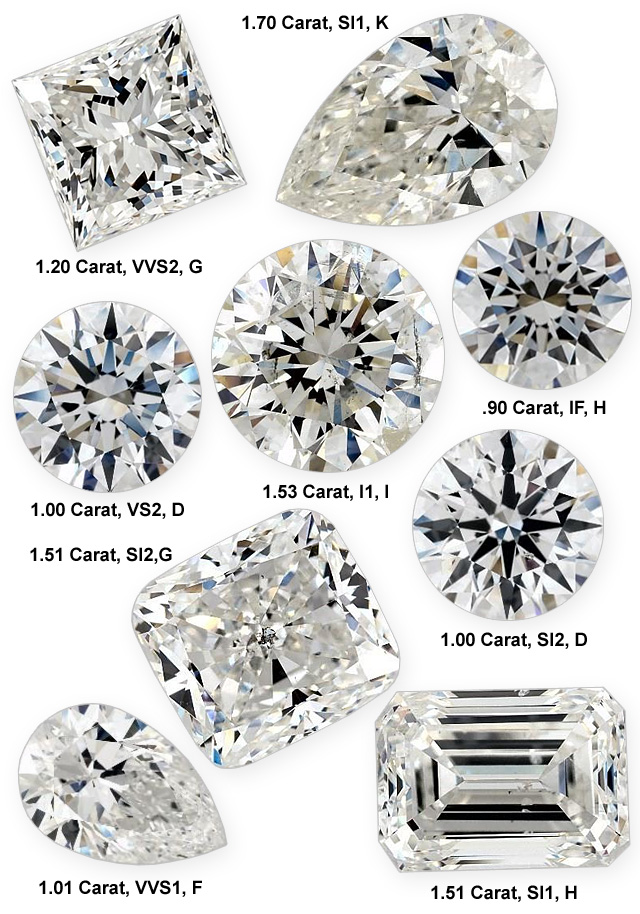
Prioritize the 4Cs
Depending on your budget and preferences, prioritize the 4Cs (cut, color, clarity, and carat weight) to find a diamond with the best balance of quality and cost.
Shop Around and Compare Prices
Look for reputable jewelers and compare their diamond prices to find the best deal for your budget. Online retailers like Whiteflash often offer competitive prices.
Consider Lab-Grown Diamonds
Lab-grown diamonds are often more affordable than natural diamonds and can give you a larger or higher-quality stone for your budget. Companies like Clean Origin specialize in lab-grown diamonds.
Look for Financing Options
Some jewelers offer financing plans that can help you budget for a diamond by spreading the cost out over several payments. Be sure to read the terms and conditions carefully.
Be Prepared for Additional Costs
Keep in mind that there may be additional costs for insurance, resizing, or customization services. Factor these expenses into your budget to avoid any surprises.
By following these tips, you can budget for the perfect diamond and make an informed decision that suits your financial situation and personal preferences.
Ethical and Sustainable Diamonds
Choosing a diamond is not only about its beauty and value but also about its ethical and sustainable origins. With growing awareness of the environmental and ethical concerns surrounding diamond mining, many consumers are opting for lab-grown diamonds as a responsible choice.
Lab-grown diamonds, also known as synthetic or man-made diamonds, are created through advanced processes like High Pressure High Temperature (HPHT) and Chemical Vapor Deposition (CVD). These methods replicate the natural conditions under which diamonds form, resulting in stones with identical qualities to mined diamonds.
Environmentally Friendly and Ethically Sourced
One of the main advantages of lab-grown diamonds is their eco-friendliness. They require less energy and generate minimal waste compared to traditional diamond mining. Moreover, synthetic diamonds avoid the ethical concerns associated with “blood diamonds,” which are linked to human rights abuses, forced labor, and child exploitation.
High-profile brands and celebrities have embraced lab-grown diamonds, signifying their growing acceptance in the market. As technology and production methods continue to advance, we can expect higher quality stones at more affordable prices, challenging the dominance of natural diamonds.
Quality, Affordability, and Accessibility
Lab-grown diamonds typically have fewer impurities and flaws, often receiving higher clarity grading.
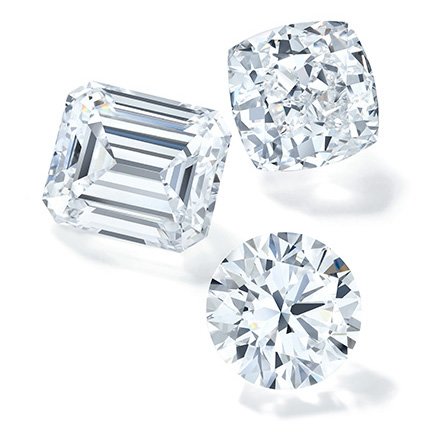
They are more affordable and have a stable supply due to their controlled production environment. This makes them an attractive option for those who value both quality and sustainability.
Companies like Blue Nile offer both ethically-sourced natural and lab-grown diamonds, ensuring conflict-free origins and eliminating exorbitant markups. Online filtering features and customizations have increased accessibility to ethically produced diamonds at lower price points, promoting sustainable and ethical choices in the fine jewelry market.
When selecting a diamond, considering its ethical and sustainable origins is a crucial aspect. Lab-grown diamonds provide an alternative that possesses the same qualities as natural diamonds but with a lower environmental impact and fair labor practices. By choosing an ethical and sustainable diamond, you not only invest in a beautiful gem but also contribute to a better future for our planet and its people.
Caring for Your Diamond
Taking care of your precious diamond is essential to ensure its longevity and maintain its shine and brilliance. With proper care and maintenance, your diamond can be passed down through generations, serving as a symbol of love and commitment.
Regular Cleaning for Sparkling Diamonds
To keep your diamond looking its best, regular cleaning is necessary. You can clean your diamond at home using warm water, mild soap, and a soft toothbrush. Gently scrub the diamond and its setting, taking care not to scratch the metal. Alternatively, you can use a commercial diamond cleaner, available at most jewelry stores. Remember to rinse your diamond thoroughly and dry it with a soft, lint-free cloth.
Professional Check-ups for Secure Settings
It’s important to have your diamond’s setting professionally examined at least once a year. A professional jeweler can ensure that the diamond remains securely in place, preventing loss or damage. They can also detect any potential issues with the setting and make necessary repairs.
Avoiding Exposure to Harsh Conditions
Diamonds may be the hardest natural substance known to man, but they are not indestructible. Avoid exposing your diamond to extreme heat, pressure, and harsh chemicals, as these can cause fractures or discoloration.

When engaging in activities that may expose your diamond to such conditions, it’s best to remove your jewelry and store it safely.
Consulting a Professional for Expert Advice
If you’re unsure about how to properly handle and clean your diamond, consult a professional jeweler for advice. They can provide guidance on the best methods for cleaning and maintaining your diamond, ensuring it remains a stunning and valuable possession.
In addition to their beauty and symbolism, diamonds are also fascinating from a scientific perspective. They form under extreme heat and pressure deep within the Earth’s mantle and come in various colors, including yellow, brown, pink, blue, and green. Some even exhibit fluorescence when exposed to UV light. As excellent conductors of heat, diamonds find use in various technologies, such as semiconductors. Moreover, lab-grown diamonds have become an increasingly popular, sustainable, and affordable alternative to mined diamonds. To learn more about lab-grown diamonds, visit the Gemological Institute of America’s website.
By following these simple care and maintenance tips, you can ensure that your diamond remains a cherished and dazzling treasure for years to come.